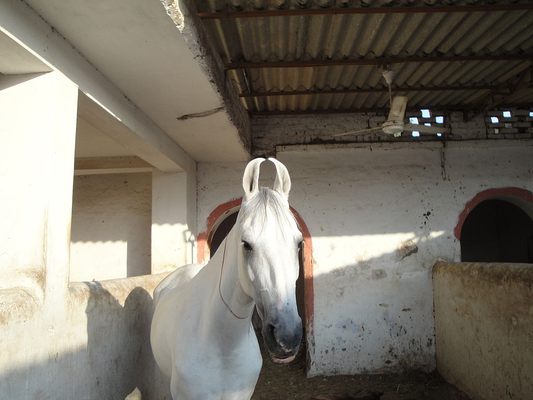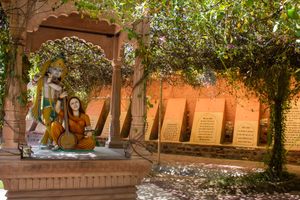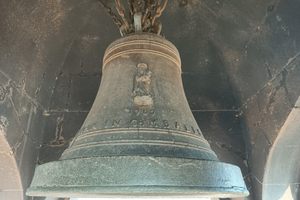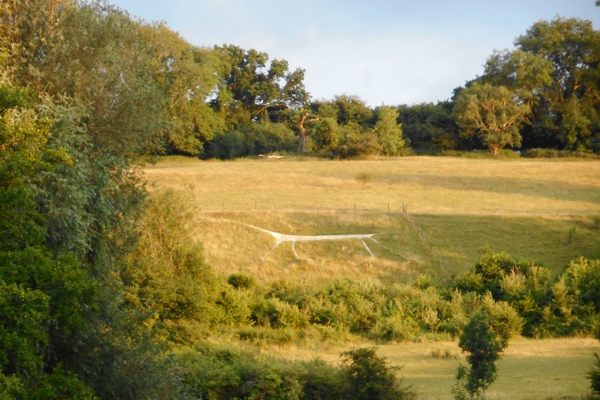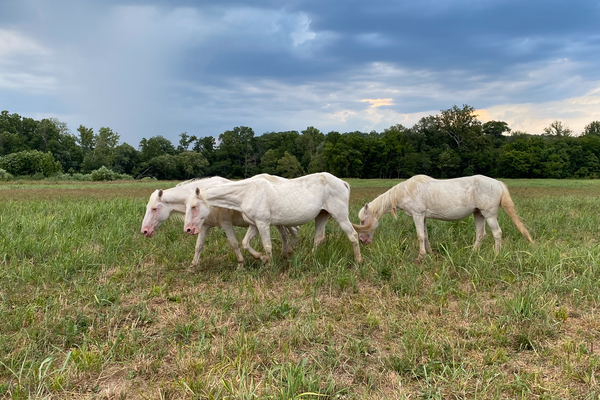About
Renowned for their bravery in battle and recognized by ears that curve into a perfect arch, the Marwari Horses of India were once the exclusive steeds of the Rajput rulers.
Named for Marwar (“region of death”), their original breeding place in Rajasthan, the horses were believed to be divine and superior to even the most royal of people. The horses were celebrated for their bravery and loyalty in the bardic literature of the Rajasthan.
One story tells of a horse ridden by the Rajput Amar Singh that bounded over a wall to save its cornered master, dying in the process. It is still memorialized with a statue by the Agra Fort near the Taj Mahal. Another tells of Chetak, the horse who knocked an elephant in the head with its hooves in the 1576 battle of Haldighati, so that its rider could kill the elephant’s master and stop the Mogul army from advancing. Later in the battle, one of Chetak’s legs is severed above the foot, yet he still rides his master to safety.
As one of the world’s oldest horse breeds, the origins of the Marwari horses are hard to pin down, but they are believed to have been bred with the Turkmenian horses of Alexander’s army. Hundreds of years of selective breeding developed a horse that was ideal for war on the arid terrain, with an ability to survive extreme heat and cold and move quickly over long distances. Their curved ears are their most notable trait and contribute to their regal presence.
All of the surviving Marwari horses are descendants of the legendary Rajput war horses. The Imperial British rule, followed by the Indian democracy, almost caused the horses to disappear. Seen as a symbol of a feudal, socially divisive past, most were shot, castrated, or given to peasants to serve as work horses. Horse aficionados and the few surviving Rajput families, who have been heavily involved with tourism in the area, have preserved the Marwari horses from extinction, although their number is still only in the hundreds.
Related Tags
Delhi and Rajasthan: Colors of India
Discover Colorful Rajasthan: From Delhi to Jaipur and Beyond.
Book NowPublished
February 1, 2011
Sources
- "Marwari Horse," Oklahoma State University: http://www.ansi.okstate.edu/breeds/horses/marwari/index.htm
- "Saving the Raja's Horse," Smithsonian Magazine: http://www.smithsonianmag.com/science-nature/raja.html
- Horse Marwari: http://www.horsemarwari.com
- Indian Horse Society of India: http://www.horseindian.com/indianhorse.htm
- Royal Riding Holidays: http://www.royalridingholidays.com/horses.htm

